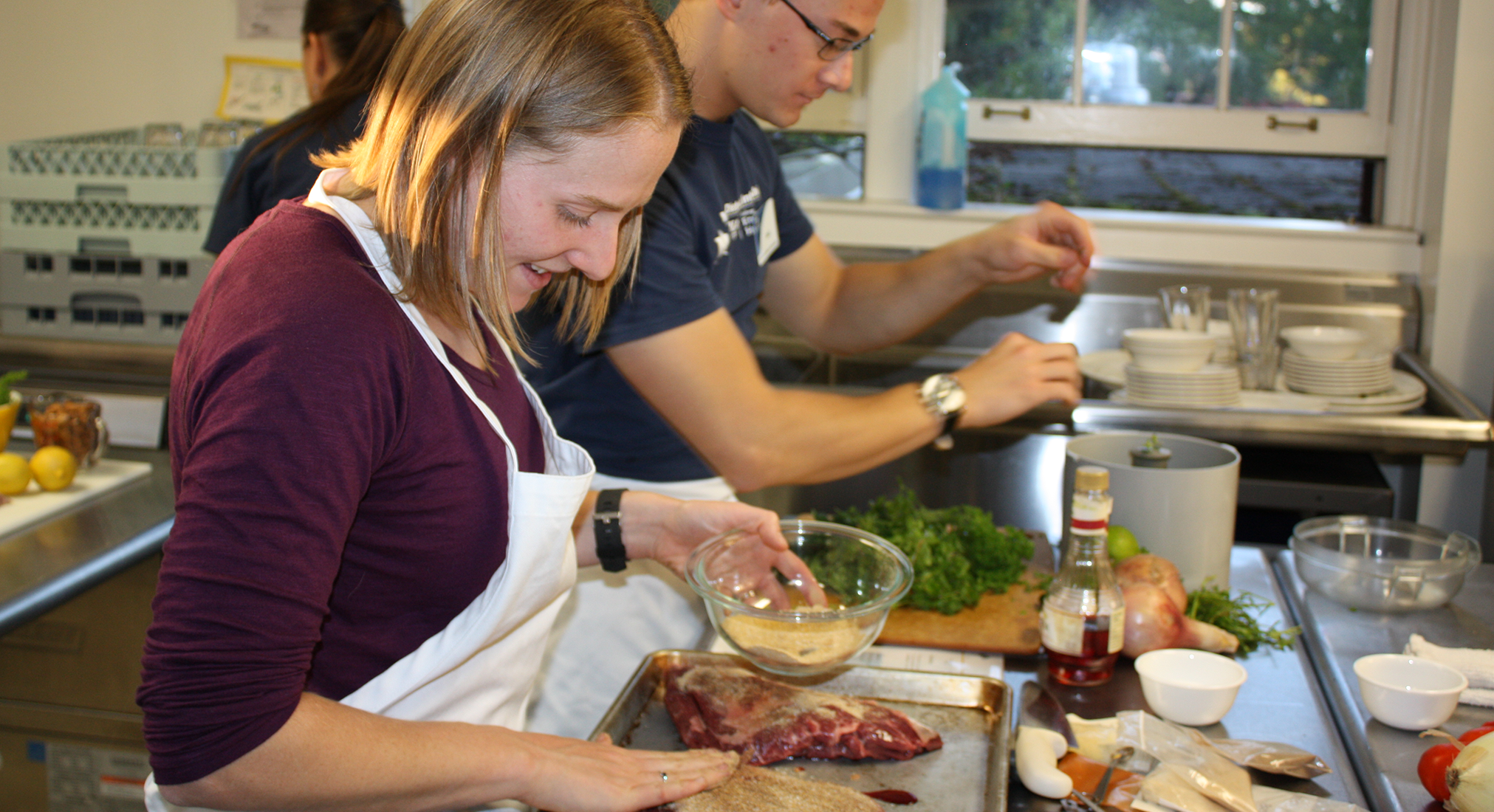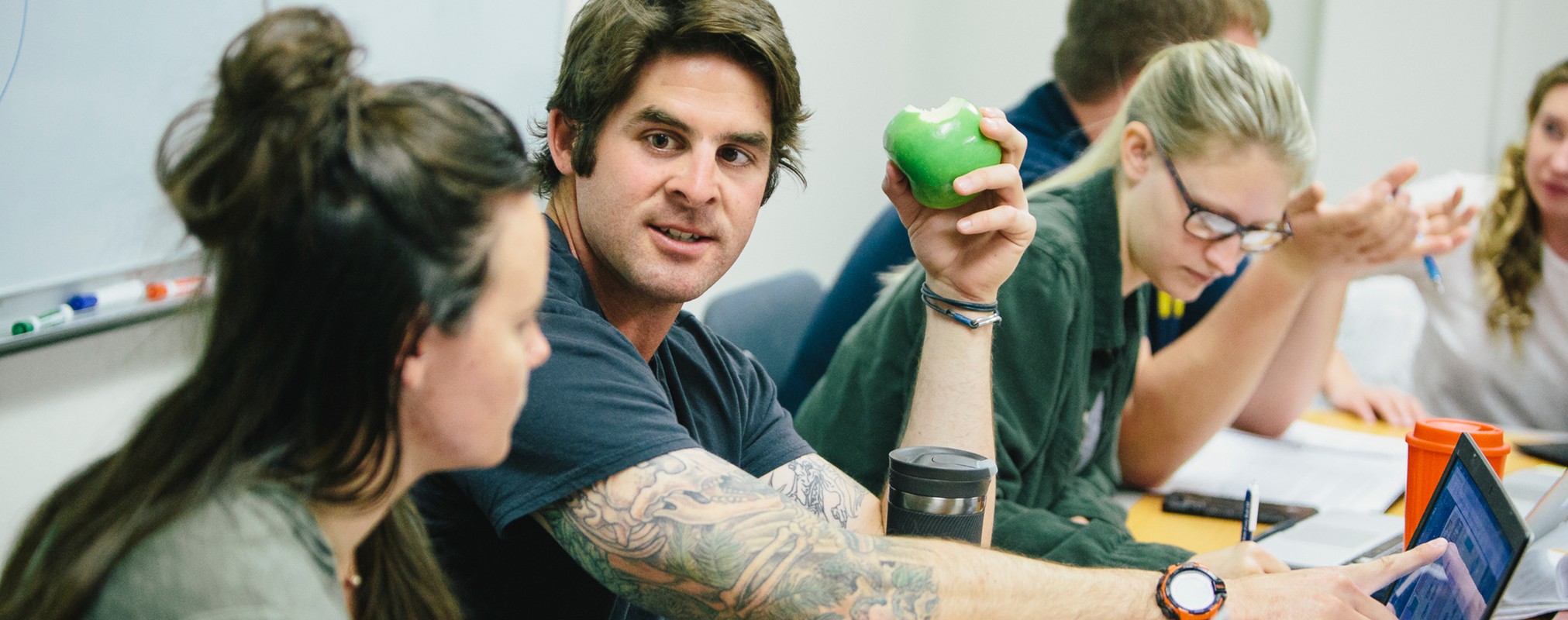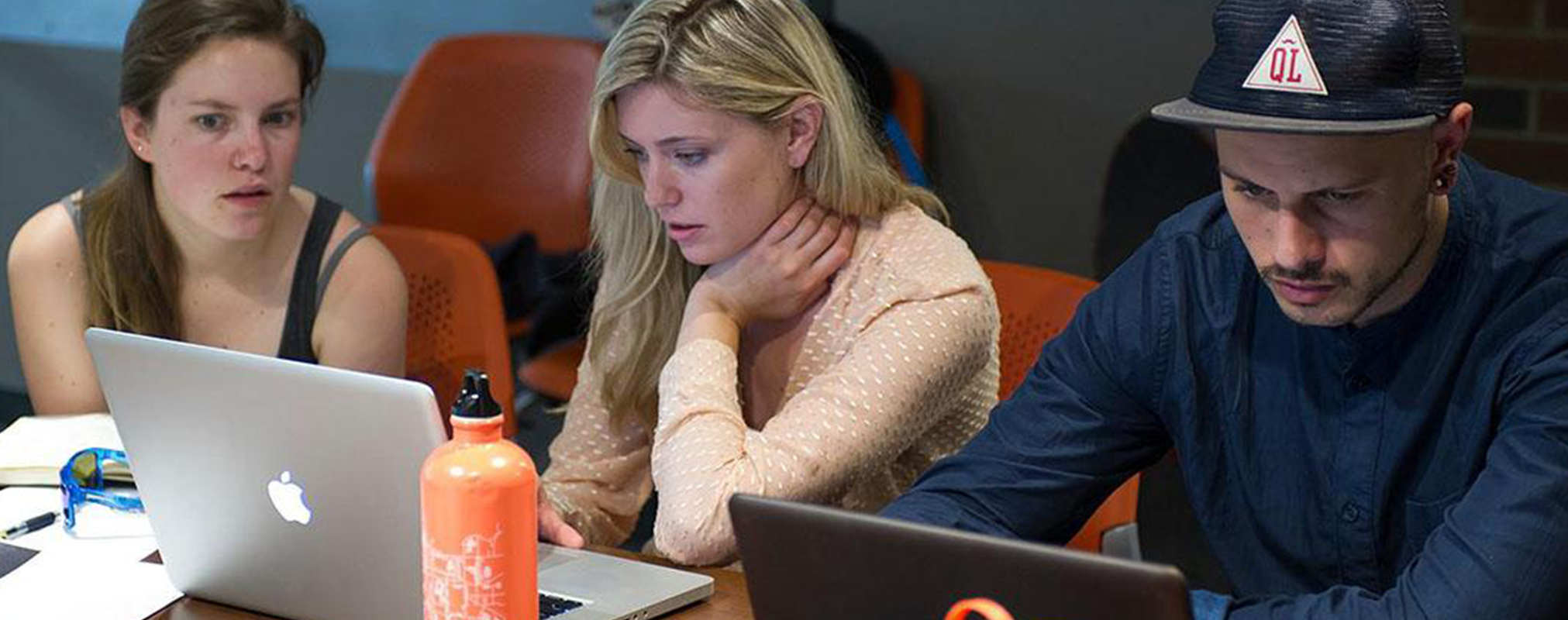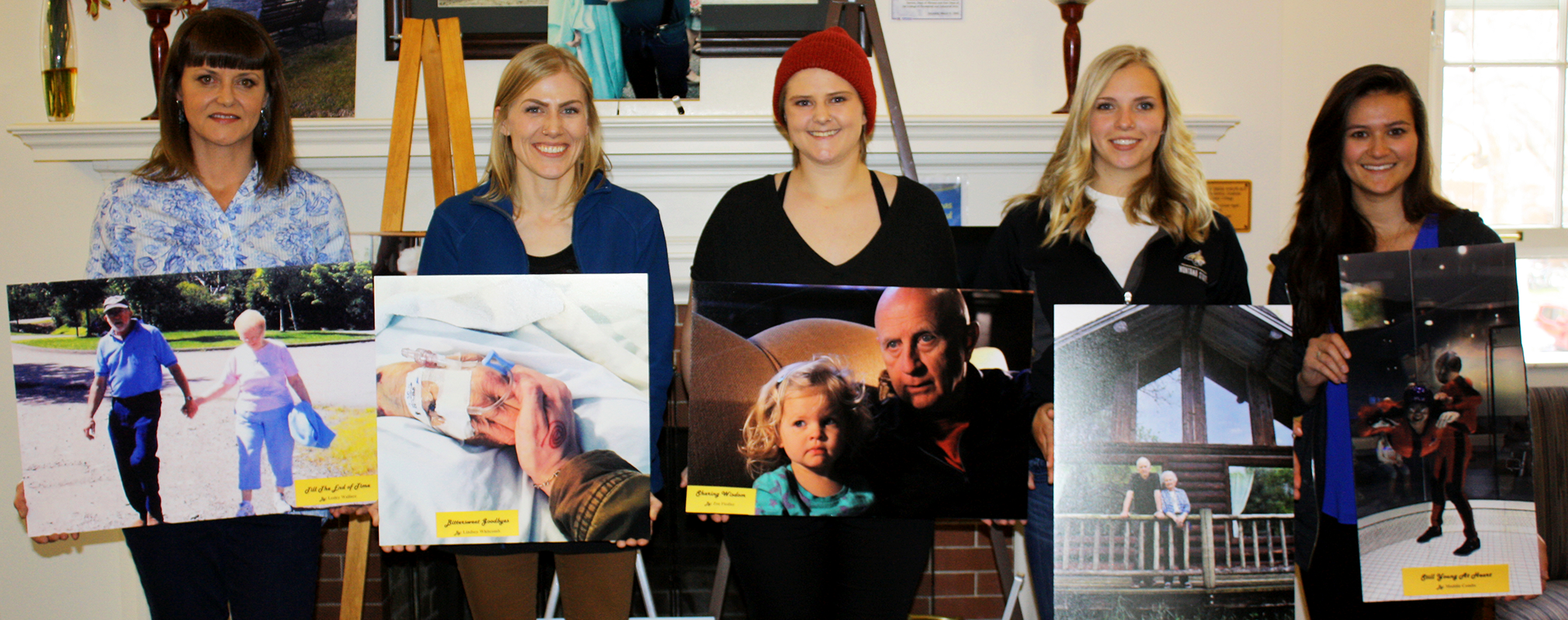Teaching and Learning
Highlights from 2016–2017


New hospitality management degree partners with Montana's Tourism/restaurant industry
After several years in development, the college’s newest program in hospitality management housed in the Department of Health and Human Development launched in fall 2017. With Montana’s thriving hospitality industry, Dean Alison Harmon began working with potential partners in the industry and created an industry advisory board even before students began taking classes.
“The experiential portion of this degree program will depend on collaborative relationships with leading hospitality providers in Bozeman and beyond,” said Harmon. “We are excited to have several leaders in the region on our Industry Advisory Board. This will help ensure that the program is relevant and that students will have the skills and professional network to support their desired hospitality career path when they graduate.”
One of the first students to hear about the degree was Elle Limesand from Snohomish, Washington, who was majoring in sociology. She heard about the hospitality management program from her resident advisor, who saw an article in the “Bozeman Daily Chronicle.” She decided to drop by Dean Alison Harmon’s office one day to find out more.
Through an Industry Advisory Board that Harmon had established with area stakeholders, she worked with Mollie Eckman, assistant general manager at the Element Hotel in downtown Bozeman, to place Limesand in a position. She worked at the front desk with guest check-in and received training from a supervisor whose career had been with Disney hotels, Marriott, and Starwood hotels, before moving to Montana to work at a guest ranch.
Marcy Gaston, assistant teaching professor, was charged with establishing a robust internship program to place students in hotels, resorts, and restaurants across Montana.
“The list is huge,” said Gaston about the number of industry leaders wanting to participate. “The list of participants is from all over the state and growing.”
In addition to the lodging and facilities option that Limesand is interested in, students can also become skilled professionals in one of the other two options: food enterprise and restaurant management: farm to table.
Three new tenure track faculty and one assistant teaching professor were hired to teach and conduct research in their areas of expertise—Sun-Hwa Kim, Wan-Yuan Kuo, Matt VanSchenkhof, and Marcy Gaston.
The College of EHHD is working collaboratively with the Gallatin College, as they have simultaneously launched a two year degree in Culinary Arts under the direction of Bill Baskin.


Department of Education launches pilot program with rural schools
In May, 13 students from the Montana State University Department of Education piled into their cars and, with faculty supervisors in tow, headed to the northeastern corner of the state to participate in an intensive, weeklong teaching practicum as part of their degree program.
Traditionally, a practicum course involves spending 45 to 60 hours over 10 weeks during a semester in supervised settings working directly with children, according to Joe Hicks, an assistant teaching professor of curriculum and instruction in the education department and director of the MSU After School Initiative. This special course was compressed, however, as it was an on-site activity intended to introduce students to teaching in small, rural school districts, where qualified teachers are in great demand but are hard to recruit.
In Montana, 75 percent of schools are considered rural, with 96 percent of those classified as small rural districts, giving Montana the highest percentage of rural schools and small rural districts in the country and some of the greatest need for qualified teachers, said Tena Versland, a professor of educational leadership in MSU’s College of Education, Health and Human Development.
“I first became interested in rural recruitment when I was doing professional development with rural superintendents who were former students,” Versland said. “They were experiencing challenges with hiring teachers.”
Read more about rural education.


Creating something out of nothing
On a Friday evening, five teams of students from across the MSU campus competed in the first ever Food|24, a Chopped-style competition where teams had less than 24 hours to create an innovative new food product, design product packaging and develop a marketing plan. The competition was open to MSU students across all majors and resulted in interdisciplinary teams that brought together graphic designers, aspiring chefs and budding entrepreneurs, according to Sam Kern, one of the event organizers and a member of LaunchCats, a co-curricular student organization focused on identifying problems, proposing solutions, and launching ventures.
The competition began on Friday evening when each team was presented with a sealed bag containing two mandatory, yet not typically paired, ingredients, such as parsnips and poblano peppers, or lentils and chocolate. From there they could integrate other food ingredients to create their exciting products. Fifteen students were divided into five teams and were assisted by professional mentors – including local chefs, caterers, graphic designers and entrepreneurs, including HHD instructors Mary Stein and Marcy Gaston.
At 5:30 pm on Saturday evening, the teams pitched their food product to a panel of judges, which included the College of EHHD’s Dean Alison Harmon, who selected three prize winners. The first place winner and also the people’s choice award went to a team who created Ruut, a gluten-free crouton created from celery root and star anise. Second place went to Snip, a parsnip/poblano pepper ice cream and third place was Mo’le’, a mole filled lentil ravioli.

MSU interdisciplinary 'Farm to Market' course wins national design education award
A Montana State University interdisciplinary course that challenges undergraduate and graduate students to solve real-world problems for Montana’s specialty crop farmers won a national design award.
MSU’s Farm to Market course won Core77’s Design Education Initiative Award. The award recognizes a business-education or nonprofit-education partnership initiative that furthers the practice of design or promotes design education. A team of highly regarded designers and educators chose the award winners, which this year included an overall category winner, two runners-up and two notable submissions.
The Farm to Market course is part of MSU’s Design Sandbox for Engaged Learning. DSEL, pronounced “diesel,” is an interdisciplinary collaboration space launched in 2015. The Department of Health and Human Development’s Mary Stein is one of the co-instructors for the course, along with professors from the College of Arts and Architecture and the Jake Jabs College of Business and Entrepreneurship.
Read more of this story.
Click here to view a video about the Farm to Market project

Gerontology certificate added to Department of Health and Human Development programs
“Gerontology spans all majors” in the Department of Health and Human Development, said Dawn Tarabochia, assistant professor of community health. Because MSU did not have a gerontology program and there was a need to address issues of aging, Tarabochia applied and received funding in 2012 from the Provost’s Office to create an online gerontology certificate program. The 15 credit program graduated the first students in spring 2016.
“Students take a total of five courses, which includes required and electives, as well as a practicum,” said Tarabochia.
Even though the coursework is online, fellow instructor Dan Koltz provides plenty of opportunities in his classes for active learning and service projects. He partners with Highgate Senior Living so students receive hands-on experiences in working with aging adults, and he looks for community events such as Alzheimer’s Walk for a Cure to get students involved in current issues. Practicum students are placed in an organization that works with older adults based on students’ interests and majors. While the majority of gerontology students are nutrition or community health majors, other majors include psychology, social work, nursing, human development and family science, and health and human performance. The gerontology certificate is open to students in all majors.
To raise the profile and awareness of the certificate program, Koltz organized the first annual photo contest.
“Students were challenged to submit a photo that tells a story through their experience with aging,” said Koltz
Winners were announced in the spring for first, second and third places. The grand prize went to Lindsay Whitcomb, a psychology major from Whitefish, Mont., for “Bittersweet Good-byes.” Whitcomb spent the last week of her ailing grandmother’s life, saying good-bye.


Education students present at a national and international conference
Five American Indian students from Montana State University shared their educational experiences at a national convention that is aimed at advancing educational programs and college and career opportunities of American Indian students.
The students presented “Barriers, Roadblocks and Obstacles: Native Future Educators Share Their Stories” at the National Indian Education Association Convention and Trade Show, which was held in Reno, Nevada. The presentation focused on how the students’ “family, academic and community relationships hold them back, keep them going and push them forward,” according to Jioanna Carjuzaa, MSU education professor and executive director of the MSU Center for Bilingual and Multicultural Education in the College of Education, Health and Human Development. Carjuzaa is the faculty adviser for the MSU Wanji Oyate student group, now called Society of Indigenous Educators (SINE), which helped fund the students’ presentation, and she accompanied the students to the convention.
In their presentation, the students discussed stereotypes they face as they pursue careers in teaching, fighting low expectations and the challenges of trying to walk in two worlds.
Student Alisha Fisher said that the students’ goal was to share their personal stories in order to let others know how important emotional support is for Native students as they pursue their degrees. Fisher, who is a member of the Northern Cheyenne tribe, received a degree from MSU this spring in art education and now is pursuing a BFA in art.
“We come from really big families,” Fisher said. “Our relationship to our families is so close that it is literally hard on everyone when a family member leaves to go to college.”
The MSU students also organized a panel discussion and had participants review a framework Montana tribal leaders created for educators, called the “Seven Essential Understandings.” The framework is intended to help teachers integrate Indian Education for All in a culturally responsive manner, Fisher said.
In summer 2017, the students were invited to share their presentation at the World Indigenous People’s Conference in Toronto, Canada. They were the only undergraduate group to present out of the 300 selected for the international conference.

